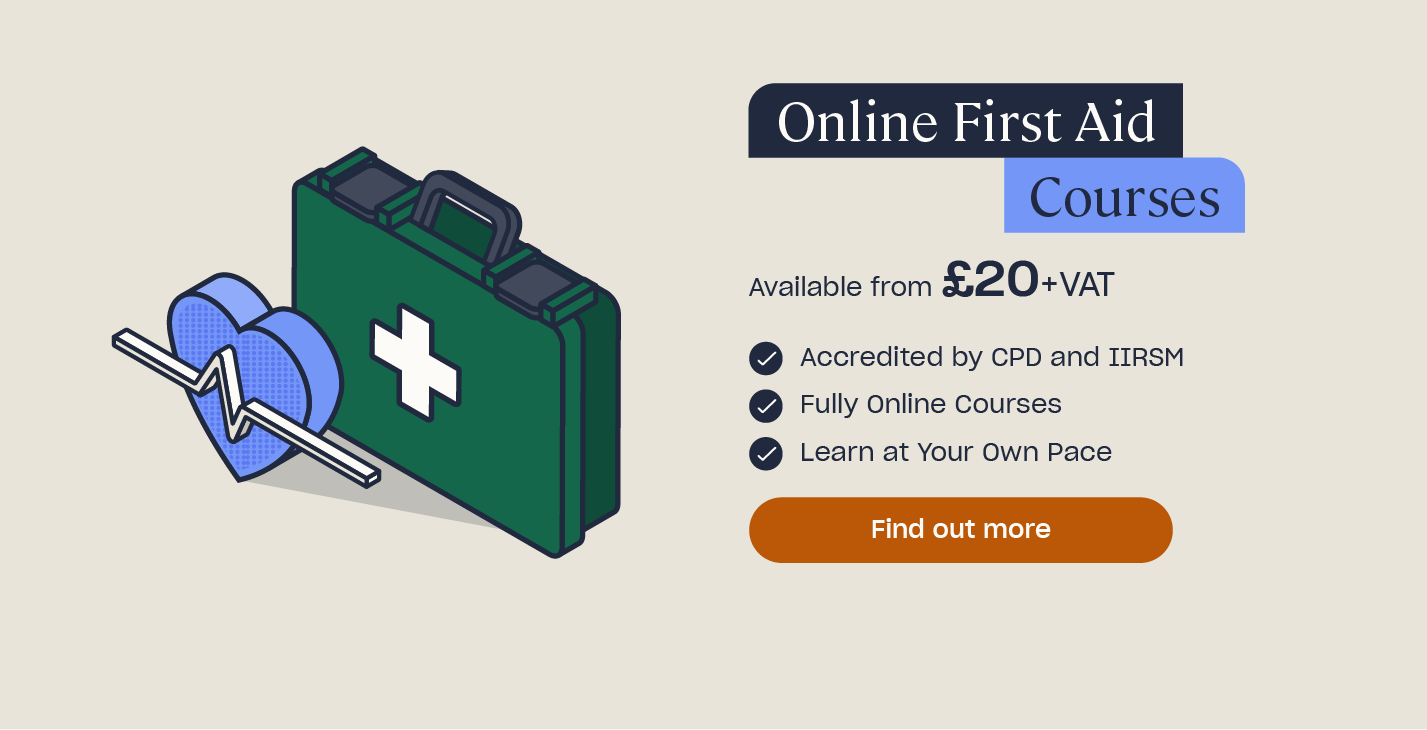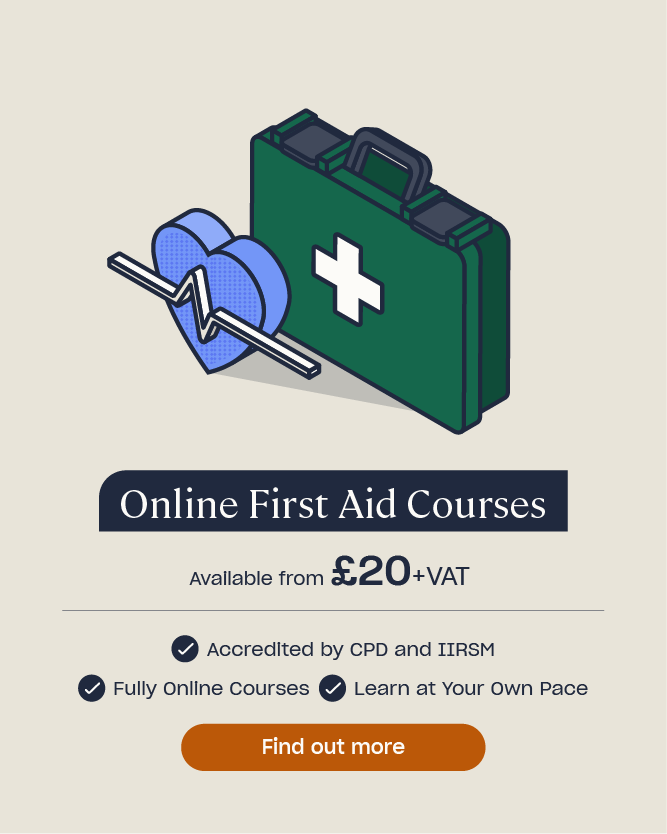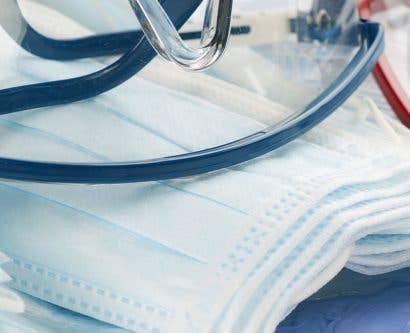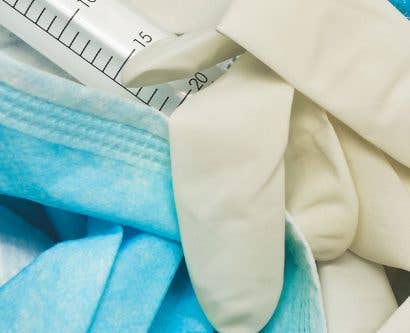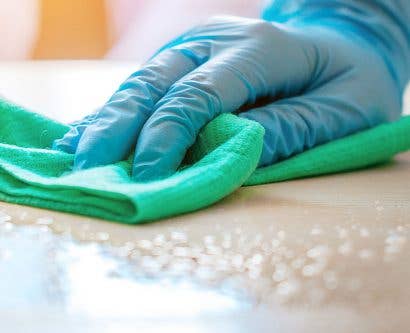What Should Be In A First Aid Kit?
You never know when someone could become unwell or injured in your workplace. Unfortunately, it’s something that can happen in any environment and at any time, and has the potential to be life-threatening. It’s therefore essential that the necessary first aid equipment is on hand so that first aid can be administered quickly and correctly.
It’s vital that every type of workplace has at least one suitably stocked first aid kit on site. This will ensure that if one of your employees falls ill or becomes injured at work, they can receive the appropriate first aid, using the correct equipment, as soon as possible – giving them the best chance of recovery.
In this article, we will outline what should be included in every basic workplace first aid kit and consider additional contents that may be required for workplaces with higher-level hazards. We have also provided a free, editable workplace first aid kit checklist that you can use to ensure that your first aid kit is always suitably stocked.
What Should Be In a First Aid Kit at Work?
First aid arrangements are a legal requirement for all businesses, and this includes having adequate first aid equipment available at all times.
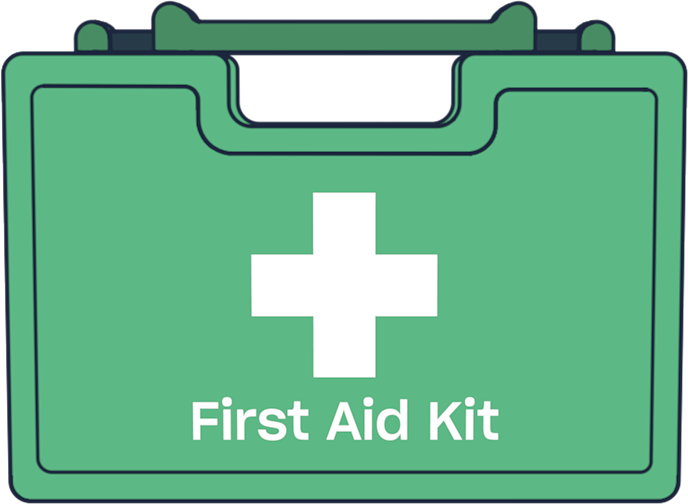
As an employer, you are responsible for ensuring that your employees can receive immediate first aid treatment, should they become ill or injured at work. Under the Health and Safety (First-Aid) Regulations 1981, you must ensure that your workplace first aid provisions are adequate and appropriate for your particular workplace, based on its circumstances.
Your legal responsibility only extends to providing adequate and appropriate first aid provisions for your employees. However, the HSE strongly recommends that you also extend a duty of care to anyone else who enters your premises, including members of the public. This means that you should also take them into consideration when performing your needs assessment and deciding the first aid provisions required for your workplace.
At a minimum for all workplaces, you have a duty to provide your workplace with:
- A sufficiently-stocked basic first aid kit in your workplace, as well as any additional contents needed, specific to your workplace. You must also provide adequate first aid facilities and trained staff, where a need for this is identified.
- An appointed person whose responsibility it is to ensure that the workplace first aid kit(s) is always suitably stocked and to call the emergency services when necessary.
- Information on the details of your workplace first aid arrangements for all employees.
First Aid Needs Assessment
To determine whether your workplace needs additional first aid kit contents, along with first aid facilities and trained staff required, you must perform a first aid needs assessment of your workplace.
A first aid needs assessment is an assessment performed by an appropriately trained and competent person, ideally the employer. During a needs assessment, you will consider the circumstances of your workplace, your workforce and any risks and hazards present. From your findings, you can then identify the first aid provisions required in your workplace.
Looking to Learn More?
If you’d like to learn more about first aid needs assessments, including how to complete one for your workplace, you can read our article: How to Complete a First Aid Needs Assessment, which contains a free template.
When deciding your first aid needs, including your first aid kit contents, you need to consider the nature of work being carried out in your workplace, and the associated risk. Performing a risk assessment will help to identify potential hazards and the level of risk associated with them. Every business should carry out a regular risk assessment.
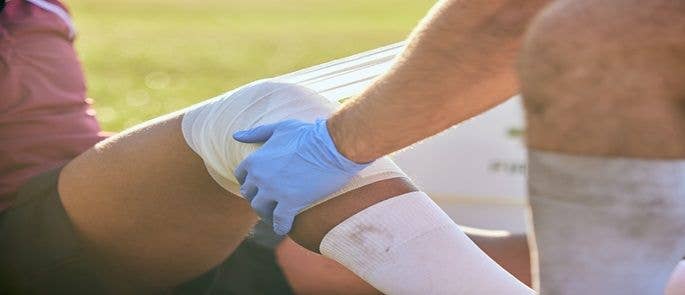
Your risk assessment will help you to identify the hazards and level of risk in your workplace, based on the number of hazards. In a low-risk workplace (such as an office or shop), there are only a small number of hazards present that could cause illness or injury.
For this reason, a basic first aid kit is sometimes found to be a suitable provision for low-level hazard workplaces, along with an appointed person and first-aid information provided to employees.
Higher-level hazard workplaces (such as factories or construction sites) will generally require a greater level of first aid provisions than low-level hazard workplaces, such as specialised first aid equipment, as there are more hazards and risks that could lead to injury or illness.
It’s important to keep in mind that just because your workplace may be considered to have low-level hazards, incidents leading to injury or illness can still occur there, so performing a first aid needs assessment is vital. To learn more about the incidents that can occur in low-level hazard workplaces, check out our article on common office injuries, here.
How Many First Aid Kits Do I Need?
The number of employees in your workplace must also be taken into consideration when deciding necessary first aid provisions. Generally speaking, larger workforces will require more first aid kits and equipment.
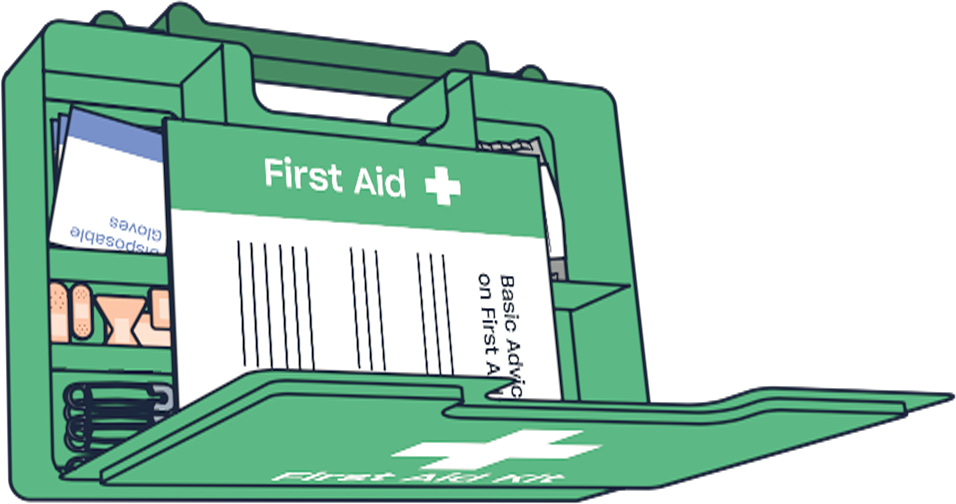
The British Standard BS 8599 provides guidance on the recommended size and number of workplace first aid kits you should have, as well as their contents, based on the nature of work being carried out and size of the workforce.
For low-level hazard workplaces:
- If there are less than 25 employees: provide one small kit.
- If there are 25 – 100 employees: provide one medium-sized kit.
- If there are more than 100 employees: provide one large kit per every 100 employees.
For higher-level hazard workplaces:
- If there are less than 5 employees: provide one small kit.
- If there are 5-25 employees: provide one medium-sized kit.
- If there are more than 25 employees: provide one large kit per every 25 employees.
The number of first aid kits you have in your workplace should also depend on the size of your workplace, even if you only have a small number of employees. If your workplace is very large – for example consisting of several floors or sites – it’s best practice to provide a first aid kit for each of these areas. These kits should be easy to identify and access so that first aiders don’t need to waste precious time searching for them.
If you’d like more specific guidance on the size and number of first aid kits you need in your workplace, take a look at our article, here.
Note that you can buy pre-packed first aid kits that conform to the British Standard (BS) 8599. However, your kit doesn’t need to meet this standard by law.
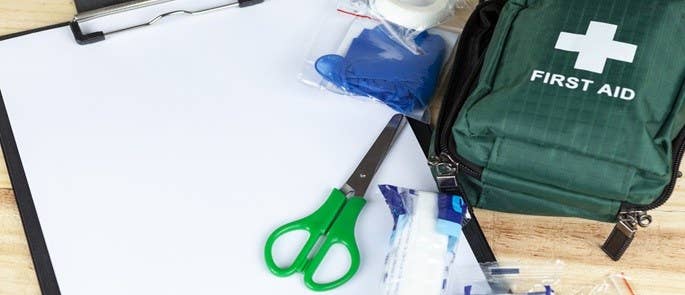
Additionally, if you have employees who work remotely or frequently travel for work, you must also ensure you meet their first aid needs requirements. This could mean providing them with a travel first aid kit or ensuring that they make or buy their own. Schools are required to have travel first aid kits for any excursions from the main site.
Every workplace is different and will have different needs. It’s your responsibility to ensure that your first aid kit contains what you’ve identified in your first aid needs assessment.
Basic First Aid Kit Items
While all workplaces are required to have a suitably stocked first aid kit, there is no mandatory list of items that must be included in one. Fortunately, your first aid needs assessment will help you to identify the specific needs of your workplace.
To help you put together your workplace first aid kit, we will go through a list of items that should be included in a basic first aid kit. This should only be used as a basis for your workplace first aid kit, with extra provisions being added based on the findings of your first aid needs assessment.
First Aid Guidance Leaflet
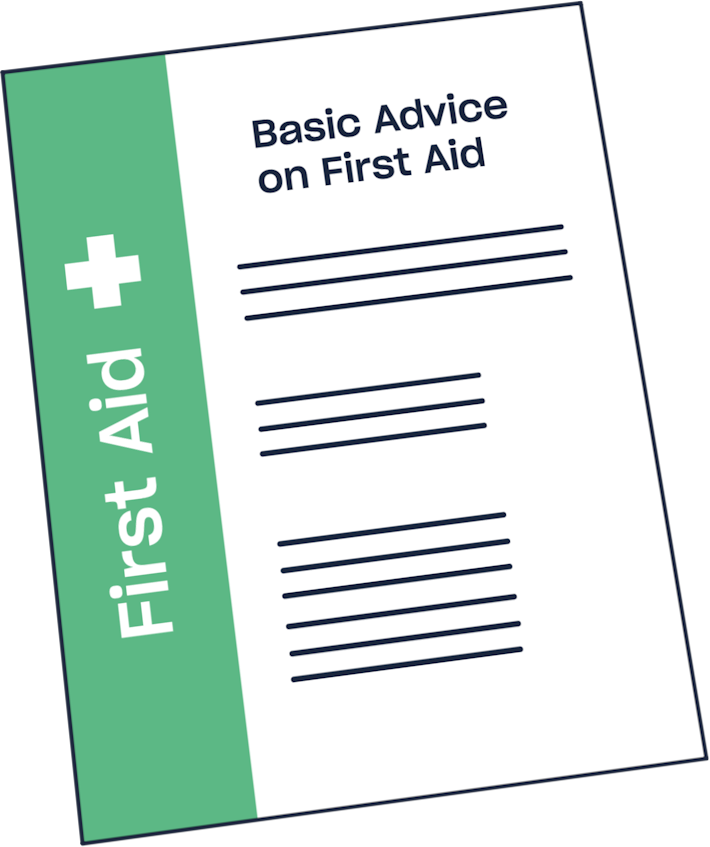
In a higher-level hazard workplace, the person providing first aid in your workplace is most likely to be a trained first aider, meaning they have the skills and knowledge required to administer aid for a range of different injuries and illnesses.
Including a leaflet on general first aid in your workplace first aid kit provides essential guidance and acts as a useful reminder for what each piece of equipment or materials can and should be used for when treating an ill or injured person.
Looking for a Course?
Providing employees with theoretical first aid training, at a minimum, will help to ensure that they always know how to use the basic first aid equipment included in a first aid kit. Our Workplace First Aid course gives you the confidence to recognise and respond to a variety of illnesses and injuries, including emergency situations, quickly and correctly.
Additionally, if someone is providing first aid in an emergency situation and they aren’t sure what to do next, they should always consult the emergency services on 999 or 112. For non-emergencies, NHS 111 can be called for professional guidance.
Sterile Dressings
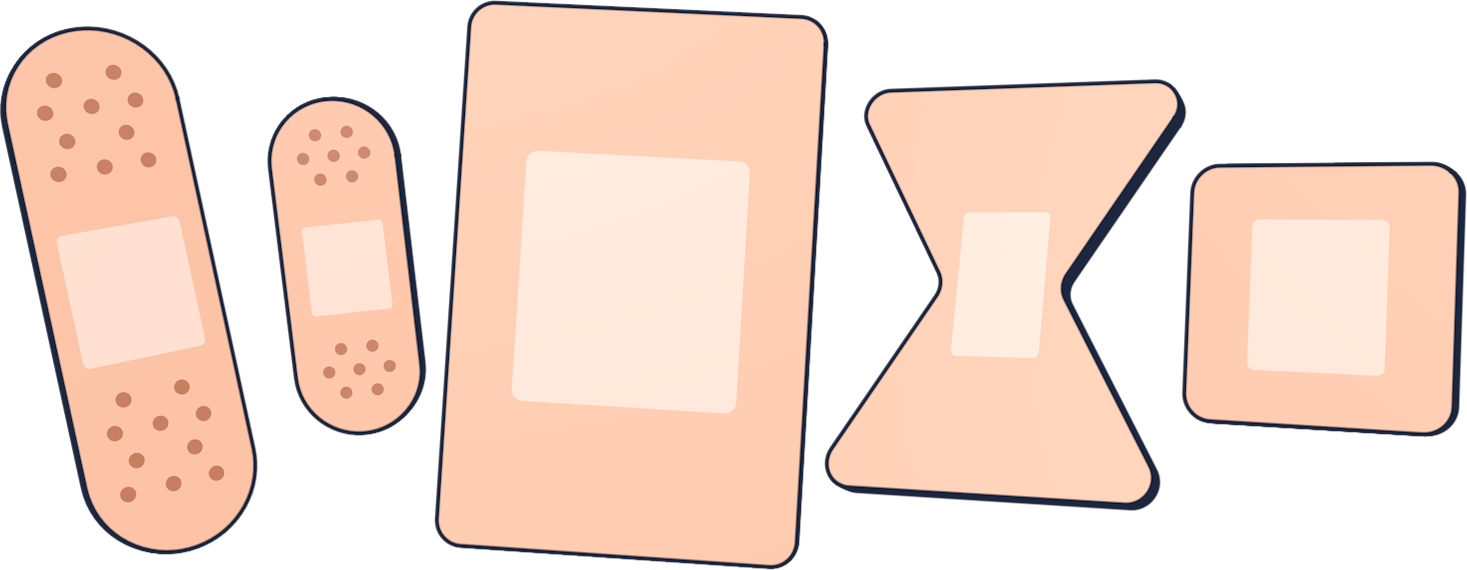
There are various types of wound dressing, appropriate for treating a range of injuries, from bleeding wounds to fractures. You should have a variety of wound dressings in your first aid kit, including, at a minimum:
- 20 individually wrapped, sterile plasters of assorted sizes, including hypoallergenic options: these are useful for small wounds such as abrasions or shallow cuts.
- Individually wrapped, sterile, unmedicated wound dressings, 6 medium sized and 2 large sized: dressing pads attached to a roller bandage are best as these are easy to apply, making them effective for use in time-dependent, emergency situations.
- 2 sterile eye pads: these should be used to protect eye injuries from infection.
If you work with food, you should include blue plasters in your first aid kit, as these can be seen easily if they fall into the food.
Bandages
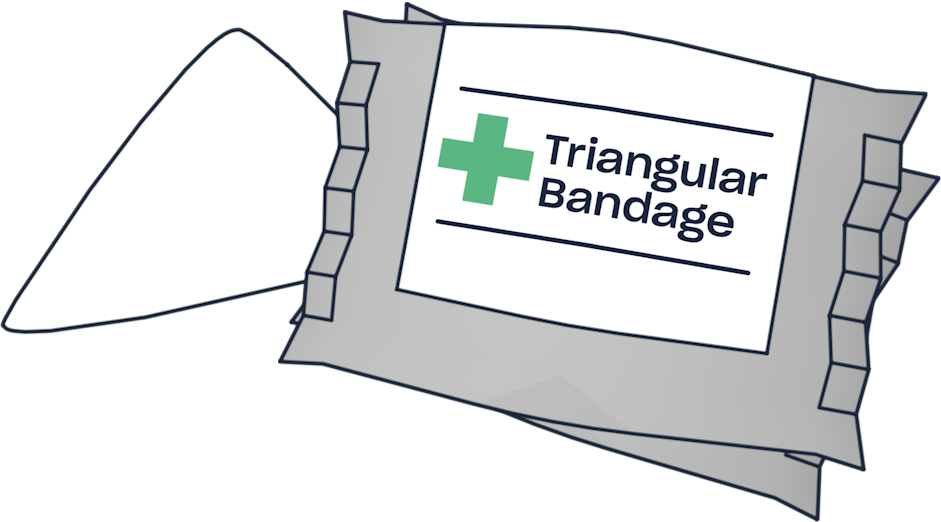
Bandages can be used to secure wound dressings, keep pressure on wounds, manage swelling and support joint injuries.
At a minimum, your workplace first aid kit should contain two individually wrapped triangular bandages. These can be used to make slings for injured limbs and, if sterile, as dressings for wounds and burns.
Depending on your workplace circumstances, your kit may also need to include:
- Roller bandages: these come in four types; conforming, open-weave, support and self-adhesive.
- Tubular bandages: small versions of these can be used to secure dressings for injuries to fingers and toes, while larger, elasticated versions are used to support injured joints, for example the knees or elbows.
You should also include at least 6 safety pins in your first aid kit, for securing the ends of bandages.
Personal Protective Equipment (PPE)
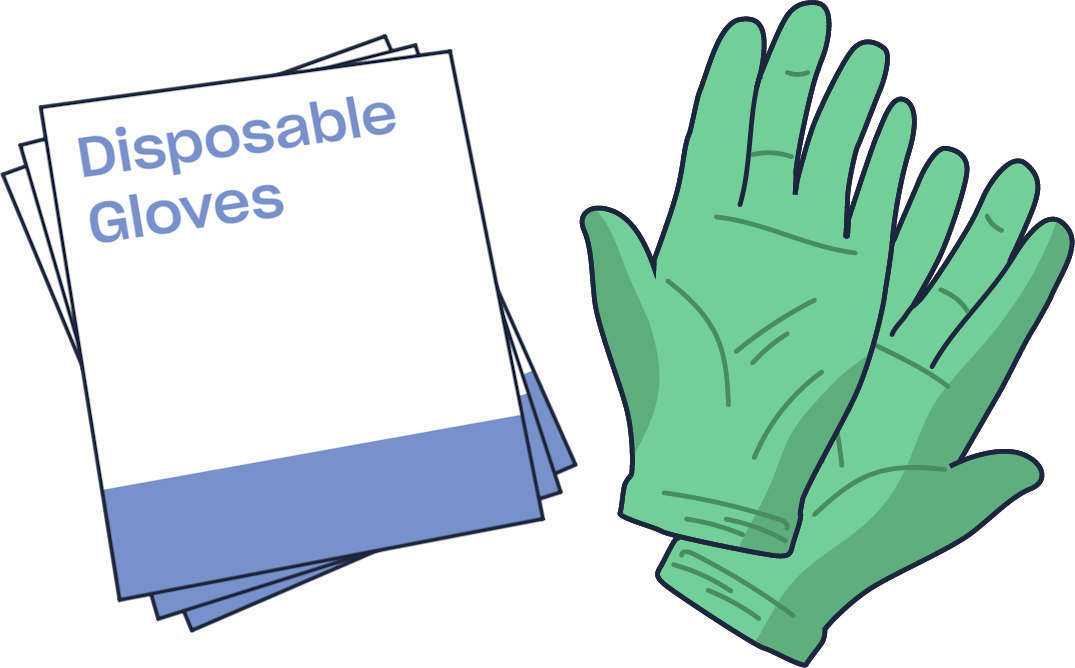
All first aid kits should contain at least three pairs of disposable gloves, preferably latex-free. Where possible, these should be worn when providing any form of first aid, but particularly when dressing wounds or handling bodily fluids or other waste materials.
In higher-risk workplaces, your needs assessment may identify the need for additional first aid PPE, for example, pocket masks or plastic face shields for performing CPR with rescue breaths. As only trained first aiders should perform CPR with rescue breaths, in workplaces that do not require a trained first aider, this provision may not be deemed necessary.
Disposable aprons are another form of PPE that can be included in a first aid kit to prevent the spread of infection through bodily fluid or other waste.
It’s important to note that, when deciding whether to put on PPE before administering first aid, the severity of the casualty’s illness or injury must be taken into account, along with the availability of PPE. In a time-dependent, emergency situation, such as a case of severe bleeding or cardiac arrest, you do not have time to go looking for PPE if it isn’t close to hand and administering first aid at once must take priority.
Remember, this is only a suggested list of first aid kit content and the contents of your particular workplace first aid kit should be determined by the findings of your first aid needs assessment.
Additional First Aid Kit Contents
As previously discussed, the findings of your first aid needs assessment may reveal the need for additional first aid kit contents, depending on the nature of work, the workplace and workforce. If you have a higher-level hazard workplace, for example one where heavy machinery or chemicals are used, you will require additional contents to ensure your employees can be treated for a range of illnesses or injuries, if needed.
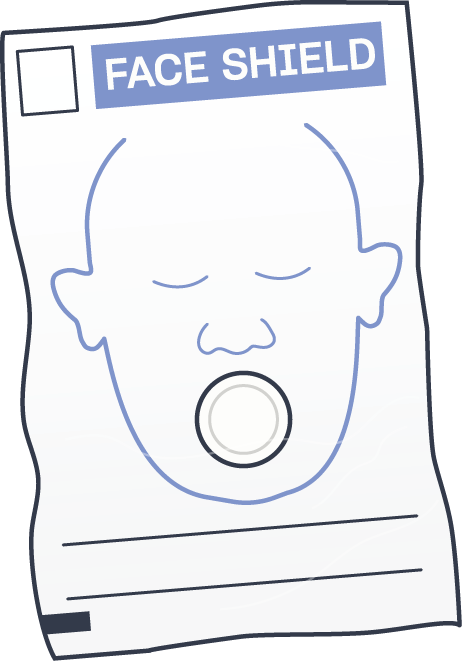
Below, we have suggested some additional contents that may be beneficial in your workplace first aid kit. However, it’s important to remember that every workplace is different and so are the hazards within them. As an employer you are best informed to know what first aid kit provisions your workplace would benefit from.
Depending on the circumstances of your workplace, your first aid kit may also need to include:
- Scissors to cut bandages or dressings to size, to cut adhesive tape, or to cut through clothing to reach a wound.
- Cleansing wipes to clean around a wound.
- Gauze pads to pad a wound.
- Adhesive tape to stick dressings to skin or stick down the ends of bandages.
- An aluminium blanket to keep a casualty warm if necessary, for example if the casualty has gone into shock.
- Hand sanitisers and/or wipes to reduce the risk of spreading infection during and after administering first aid.
- Ice packs and heating pads to treat soft tissue injuries, such as sports injuries.
- Burn gels and dressings are particularly important in workplaces with a high risk of burns, such as the hospitality industry.
- Eye wash is required if a hazardous substance enters the eye, such as a chemical. If your workplace doesn’t have mains tap water, your kit should include at least one litre of sterile water or sterile normal saline (0.9%) in sealed, disposable containers. In some high-level hazard workplaces, where there is a substantial risk of this, such as in a laboratory, may have eye bath stations.
- Tweezers can be used to remove splinters, tics, etc.
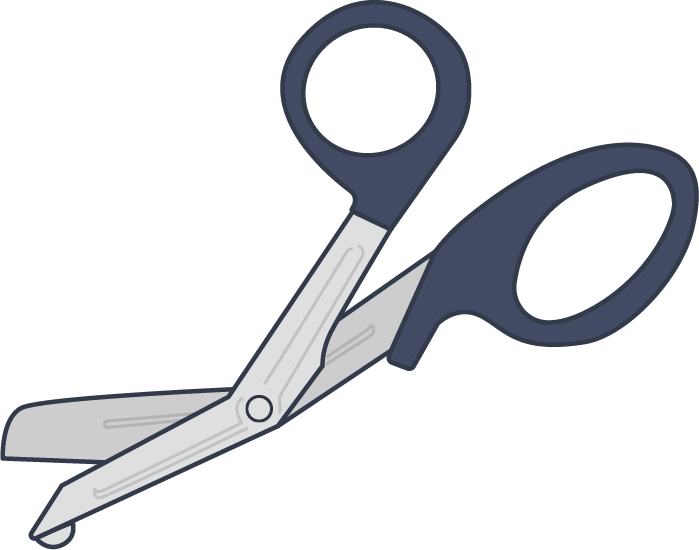
Workplace First Aid Kit Checklist
We have provided you with a free, downloadable and editable workplace first aid kit contents checklist that can be used in your workplace by your appointed person. They can use the first aid kit checklist to ensure that your workplace first aid kit is always suitably stocked in case an employee, or anyone else in that environment, becomes unwell or injured at work.
We have included the basic first aid kit contents covered in this module in the checklist – however, it is editable so that you can add any additional equipment required for your particular workplace, as identified by your first aid needs assessment.
If the nature of your workplace circumstances changes, you should perform a new needs assessment and, if it identifies any new first aid equipment needed in your workplace, you should add this to the checklist and your first aid kit.
You can download the checklist using the button below:
Knowing how to perform first aid, through theoretical and practical training, can mean the difference between life or death for someone suffering a medical emergency. However, without the proper first aid equipment available close to hand, first aiders will struggle to administer this aid, and the casualty could deteriorate. It is therefore essential that you have a suitably stocked first aid kit in your workplace to keep your employees as safe as possible.
What to Read Next:
- Workplace First Aid Quiz
- How Many First Aiders Do I Need In My Workplace?
- First Aid Qualifications: The Difference Between FAW and EFAW
- How to Support Individuals After Giving First Aid Assistance
- What are the Responsibilities of a First Aider?


